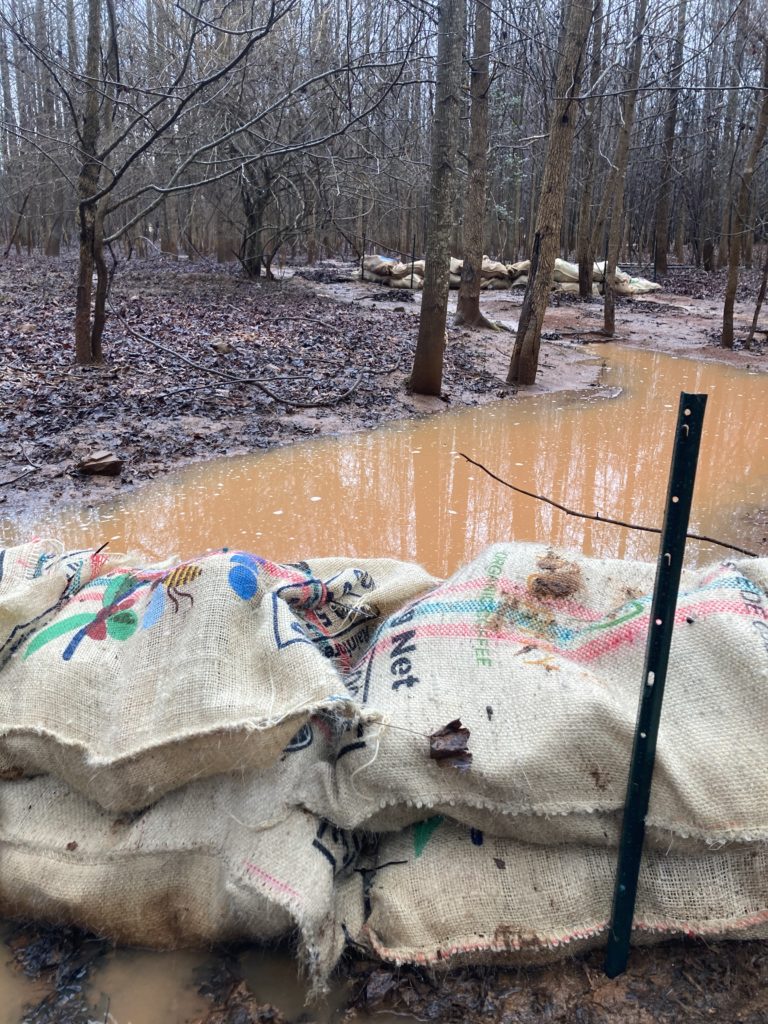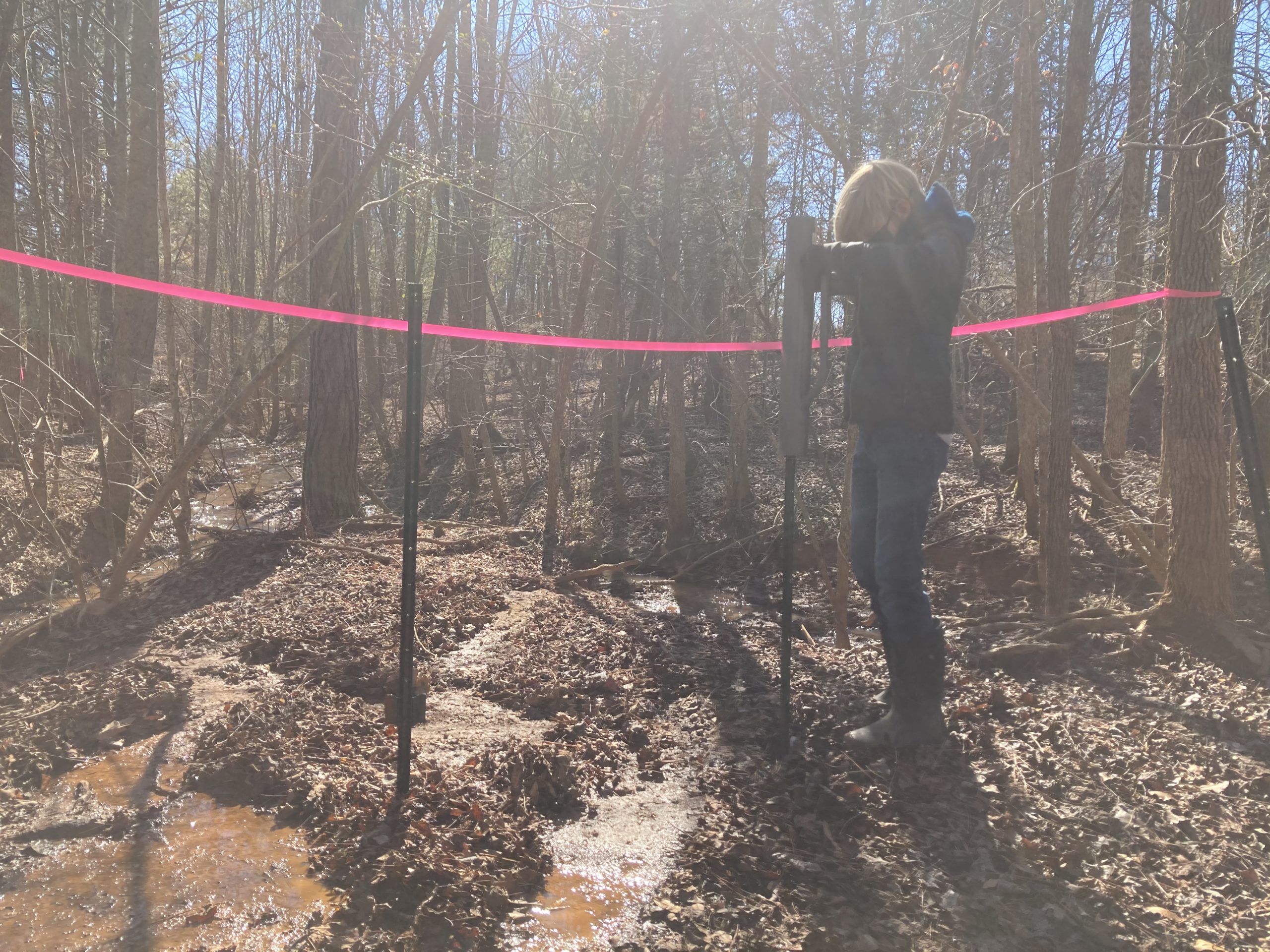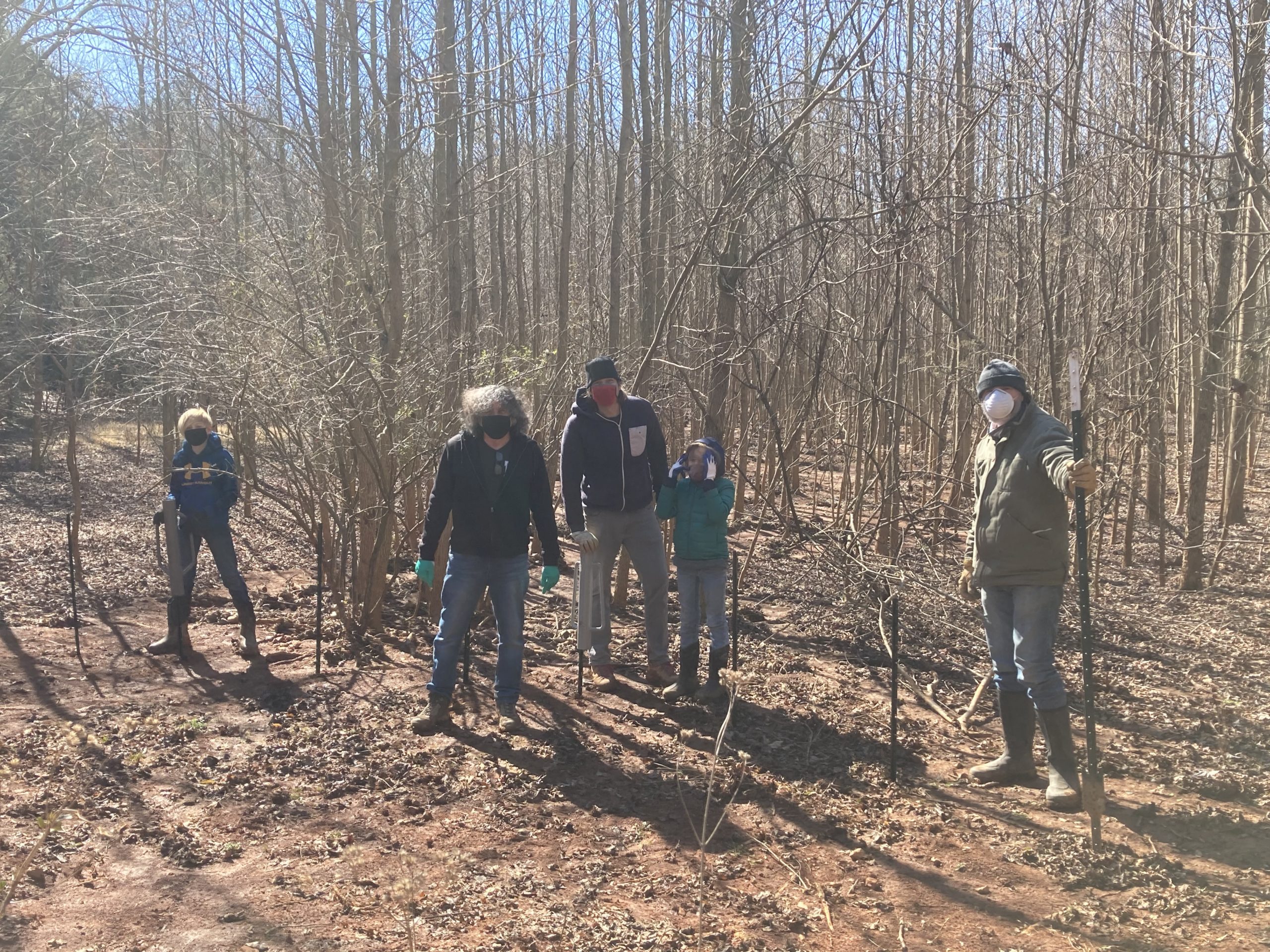
By Emily Sutton, the Haw Riverkeeper with Haw River Assembly. Reposted with permission from Haw River Assembly.
Controlling Erosion with Mushrooms
Saxapahaw, North Carolina is a tiny riverside village nestled against the Haw River in southern, rural Alamance County. It is a community of artists, environmentalists, creative business owners, chefs, and farmers.
Two of these farmers, Ches and Laura Stewart, recently purchased new land to expand their mushroom business, moving them closer to Saxapahaw. Haw River Mushrooms grows a diverse variety of mushrooms, and boasts of creating a “business model that values people, profit, and planet.” After the first major rain event on the new farm, they quickly realized that there was no soil left to hold in stormwater runoff. The creek bisecting their farm ran bright orange with clay from the eroded banks and compacted soil from years of intensive livestock. Ches and Laura were concerned – they knew that unless something changed, erosion and runoff would continue to harm their land, the creek, and ultimately the community they care about, but they weren’t quite sure what to do. So they called their Riverkeeper.
When Haw River Assembly got involved, we had the experience and tools to restore banks and minimize stormwater runoff, but Laura had a vision of something different. Mycoremediation is the science of using mushrooms to pull pollutants and toxins from water and soils. Rather than creating traditional check dams, we would use the byproduct of spent mushroom substrate as material for our erosion control. In addition to targeting the volume and velocity of the runoff, we would also be filtering the runoff before it reached the stream.

We made some calls and found overwhelming support for this project from our community. Joe Van Gogh Coffee Roasters, with a commitment to zero waste and sustainability, donated as many burlap coffee sacks as we could transport. Mellow Marsh Farm, a nursery committed to wetland and stream restoration, stormwater management, and native plants, donated 300 live stakes to replant the buffer of Motes Creek. Twelve people donated $500.00 through a GoFundMe campaign to raise money for any equipment needs or additional plants we had to purchase.
On February 20, 2021, 12 volunteers joined us at Haw River Mushrooms in Saxapahaw to build erosion control structures to slow down runoff from compacted soils. A team of brothers, age 8 and 11, drove in posts. Other volunteers filled the burlap sacks with spent mushrooms substrate and slogged through the mud to get the structures wired in place. Each volunteer left with tired muscles and a sense of accomplishment. The next big rain came the following day, and the check dams were already making an enormous difference in the color of the stream and the erosion of the stream banks.

On February 27, another group of volunteers will replant the buffer with livestakes; native Silky Willows, elderberries, and ninebark shrubs. Each of these species have hardy root systems and will hold the soil to prevent runoff, which will already be significantly slowed by the erosion control methods. The upper floodplain, now stabilized, will be seeded with native grasses and cover crops, and held in with additional organic matter from the mushroom substrate while the natural forest seed bed is reestablished. We are hopeful that this soil can be regenerated to full health and the stream bank stabilized within a full growing year.
Haw River Mushrooms produces hundreds of blocks of spent mushroom substrate every week. With so many small farmers committed to regenerative practices throughout the Haw River watershed, we look forward to recreating this project again, and already have a few new sites in mind. Raising healthy food and protecting our waterways — that’s a win-win for everyone.